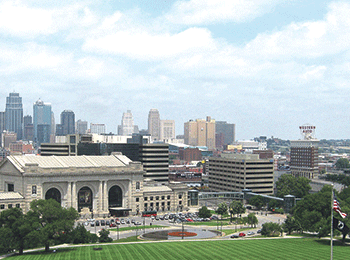When I first heard of the Steamboat Arabia, I didn’t think much of it. Many ships sank in American rivers over the last couple of centuries, and I thought Arabia would be no different. After hearing that the largest collection of pre-Civil War American artifacts outside the Smithsonian were found in its hull, I began to take notice.
While carrying 200 tons of supplies up the Missouri river from St. Louis, Mo., the Arabia sank in 1857 near present day Kansas City. Quickly covered by mud and silt, it sat forgotten until the mid-1980s, when a team of private treasure hunters located the wreckage under a nearby farmer’s field. Since the boundaries of the river had shifted over the years, heavy digging equipment was needed to extract the vessel from the nearly 50 feet of topsoil covering the ship.
In a herculean effort that continues to this day, excavators brought to the surface a cross section of artifacts related to 19th century American life. The staggering collection includes tens of thousands of items, including edible food!
Perfectly preserved in the cold, zero- oxygen hull for 130 years, animal-based products, such as leather and felt, as well as inorganic materials remained fully intact. After quickly deep-freezing the cargo, excavators have spent the last 25 years slowly drying and preserving the contents utilizing a process perfected by the Canadian Conservation Institute in Ottawa.
The Steamboat Arabia museum is, however, just one of many impressive locales in Kansas City.
Divided between two states, Kansas and Missouri, Kansas City’s charming metropolitan area sparkles from over 400 municipal fountains that dot the landscape, second in number only to Rome, Italy. The fountains provide cooling relief to an area that regularly exceeds 40C during the summer.
 From the legendary 18th & Vine R&B clubs (made famous by Fats Domino in his 1959 hit Kansas City, Here I Come), to the stately Raphael Hotel overlooking the Country Club Plaza area lined with Spanish style buildings, Kansas City surprises many with its impressive scenery.
From the legendary 18th & Vine R&B clubs (made famous by Fats Domino in his 1959 hit Kansas City, Here I Come), to the stately Raphael Hotel overlooking the Country Club Plaza area lined with Spanish style buildings, Kansas City surprises many with its impressive scenery.
The city is also home to the National World War I memorial and museum. Walking into the building, visitors walk through a re-created field of red poppies, an ode to Canadian John McCrae’s legendary poem, In Flanders Fields.
Within the museum, the exhibits focus on the events leading up to World War I, and later, the U.S. involvement towards the end of the war. Numerous exhibits detail the heroism of Canadian troops during the bloody conflict.
Centred primarily in the pastoral suburb of Overland Park, Kansas City’s Jewish life remains vibrant, despite recent events that might have crippled communities in other cities. Earlier this year, neo-Nazi F. Glenn Miller murdered two people in the parking lot of the local JCC and a third in front of a Jewish retirement home.
Rabbi Binyomin Mazer, mashgiach at Village Shalom Retirement Home, had always found Kansas City a safe community. Residing in Overland Park since 2005, Mazer wasn’t working that fateful Sunday in April when Miller opened fire. “For a month following the shootings, the community was in an emotional void,” said Mazer.
While not a resident of the retirement home, 94-year-old Irene Wurtzberger knew many people who reside there.
After surviving the Holocaust and making it to New York in 1945, Wurtzberger shortly thereafter informed her family she was moving to Kansas City. Her father emphatically replied, “Why would you go there? That’s where coyotes live!”
But Wurtzberger was not to be deterred. During the 1940s, Kansas City’s wide-open spaces, available housing and booming economy lured many Jews to the city. Wurtzberger, who died shortly after our visit, resided in a small cottage on the property of Beth Israel Abraham and Voliner, Kansas City’s lone Orthodox synagogue.
In the months following the attacks, this community of about 10,000 has come together across the religious spectrum. Increasingly vigilant in the face of anti-Semitism, community leaders tightened security at Jewish institutions, while encouraging members to look after those in need, like Wurtzberger. Today, the sense of achdut (unity) within the Kansas City Jewish community is remarkable, something not often found in other cities.
Michael Stavsky acknowledges the assistance of the Kansas City Convention & Visitor’s Bureau, and the Raphael Hotel in arranging his family’s trip to Kansas City.
